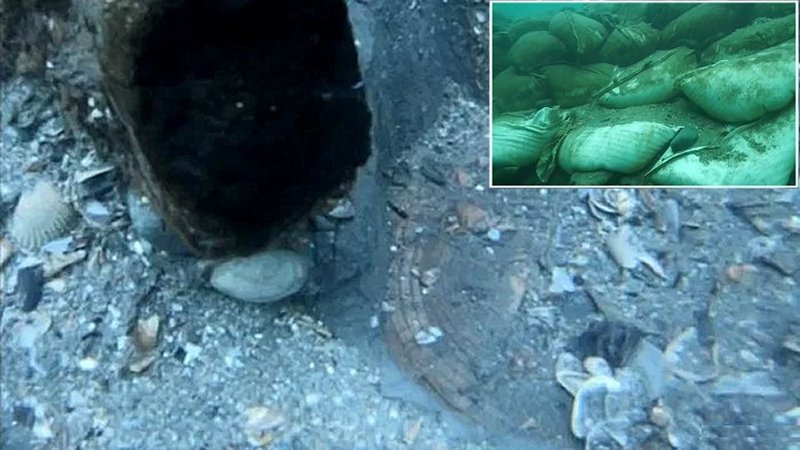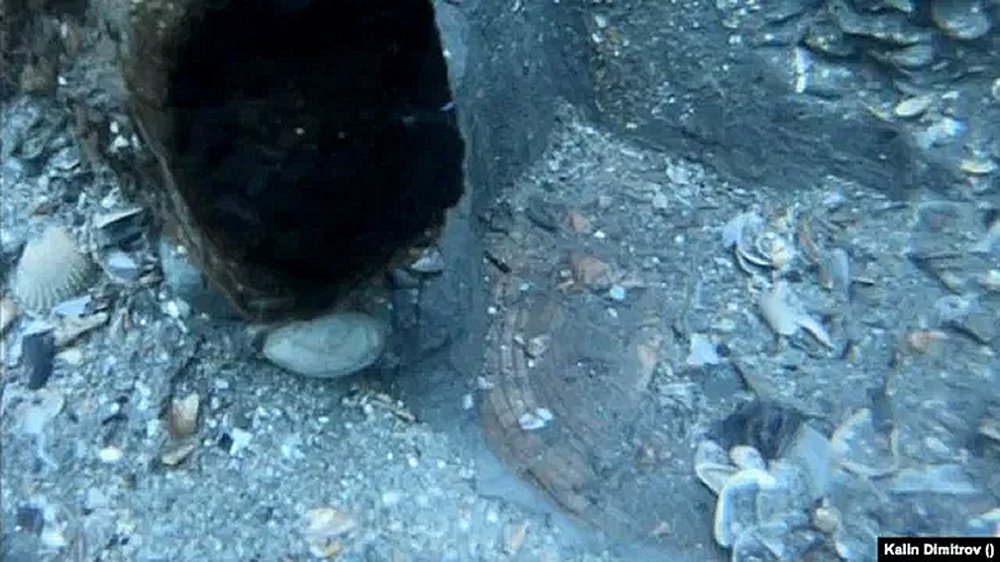Conny Waters – MessageToEagle.com – A submerged prehistoric settlement on the Black Sea coast, has been discovered by underwater archaeologists. The settlement was inhabited around 1,000 years earlier (going back to the Chalcolithic (Copper Age) than previously believed, and is located near the mouth of the Ropotamo River in Burgas District, Bulgaria.
Archaeological materials discovered in 2020 show that the submerged prehistoric settlement near the mouth of the Ropotamo River in Southeast Bulgaria was actually settled 6,000 years ago, in the Chalcolithic. Photo: Kalin Dimitrov, Sozopol Center for Underwater Archaeology
Another interesting discovery is that 5,000 years ago, the level of the Black Sea was 5 meters lower than it is today.
It is known at the height of the last ice age, sea levels were more than 100 m (330 ft) lower than they are now, and there is also evidence that water levels in the Black Sea were considerably lower at some point during the post-glacial period. Some researchers theorize that the Black Sea had been a landlocked freshwater lake during the last glaciation and for some time after.
In the aftermath of the last glacial period, water levels in the Black Sea and the Aegean Sea rose independently until they were high enough to exchange water. The exact timeline of this development is still debated by researchers.
Of course, there is also several catastrophic scenarios, and one of them is so-called the “Black Sea deluge theory” once put forward by William Ryan, Petko Dimitrov, and Walter Pitman. According to ‘The Black Sea Deluge’ a catastrophic rise in the level of the Black Sea circa 5600 BC was due to waters from the Mediterranean Sea breaching a sill in the Bosporus Strait.
The researchers agree that the sequence of events described did occur. However, there is still debate regarding the suddenness of the event, its magnitude, and dating. Interestingly, the hypothesis is that its description has led some to relate this catastrophe with prehistoric flood myths.
Parts of the wooden stilts that the prehistoric people used to support their homes already in the Bronze Age, after the sharp rise of the Black Sea level, can still be seen today. Image source
This year excavations at the site of the settlement revealed materials dated to the Copper Age at the time of its existence was situated entirely on land – since they have been found in a layer which is characteristic of the land environment, archaeologist Kalin Dimitrov from the Sozopol Center for Underwater Archaeology said.
The settlement was continuously inhabited, after its settling in the Chalcolithic 6,000 years ago, it was also inhabited during the Bronze Age. In the 6th century AD, the Iron Age, the period of Ancient Thrace, and of the Ancient Greek colonies on today’s Bulgarian Black Sea coast, the site had a seaport.
“Back then, our research between 2018 and 2020 showed that below the layer of the port there are Bronze Age settlement remains, dating back to the transition between the 4th and the 3rd millennium BC, from the very beginning of the Bronze Age on the Bulgarian [Black Sea] coast,” Dimitrov told Archaeology in Bulgaria. The underwater expedition in September 2020, however, have demonstrated that the settlement goes back to ca. 4,000 years BC, and that at the time it was entirely on land.
Parts of the wooden stilts from the prehistoric stilt homes in question have been found surviving underwater testifying to the rapid increase of the level of the Black Sea during the said period.
The newly discovered Chalcolthic materials show that humans lived in the now submerged prehistoric settlement 6,000 years ago, which is some 1,500 years before the construction of the Cheops Pyramid in Ancient Egypt in the 2,600 – 2,500 BC.
Fragment from video provided by archaeologist Kalin Dimitrov (Sozopol Center for Underwater Archaeology) shows the underwater research of the submerged prehistoric settlement near the mouth of the Ropotamo River.
The latest findings from the submerged prehistoric settlement at the mouth of the Ropotamo River, however, also reveal information about climate change and the effect on the rise of the sea level. The archaeologists have also found out more about a port, dated to the Greco-Roman world.
“This port operated over a very long period of time, almost without interruption, from the 5th century BC until the Modern Era. If one looks at the materials from the various ages, it is very easy to notice the periods of prosperity, development, and wealth of this region, as well as the crisis periods, from which there are almost no materials left,” Dimitrov said.
The researchers believe that the ancient Ropotamo port was part of the territory controlled by the Ancient Greek colony of Apollonia Pontica, today’s Sozopol and followed the rises and declines of Apollonia Pontica itself.
Written by Conny Waters – MessageToEagle.com – AncientPages.com Staff Writer








